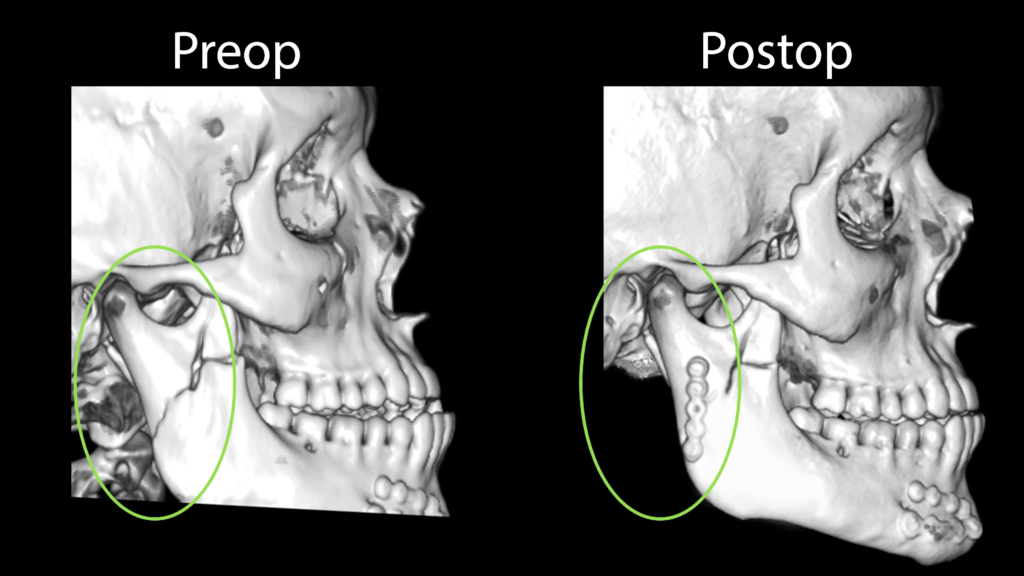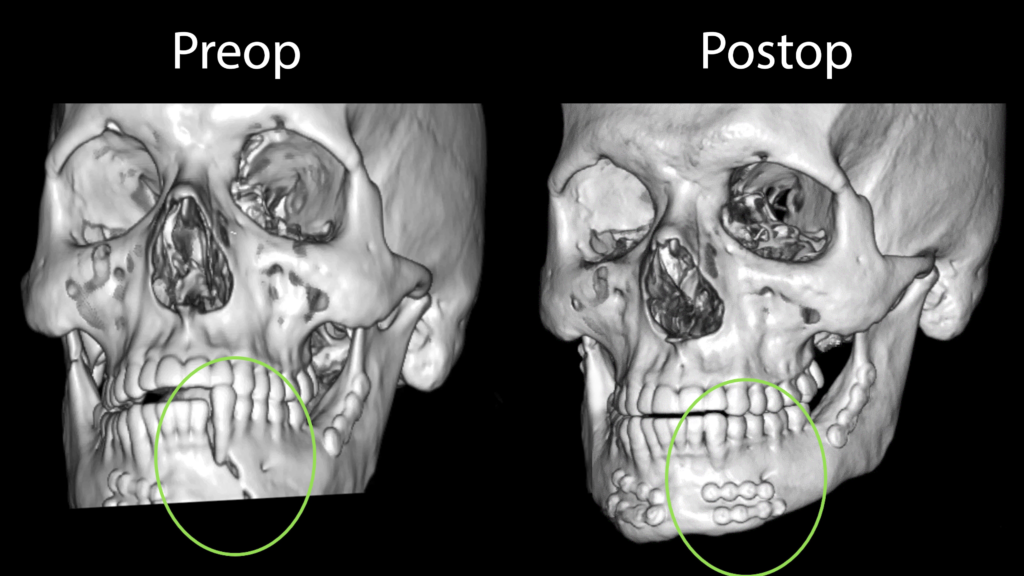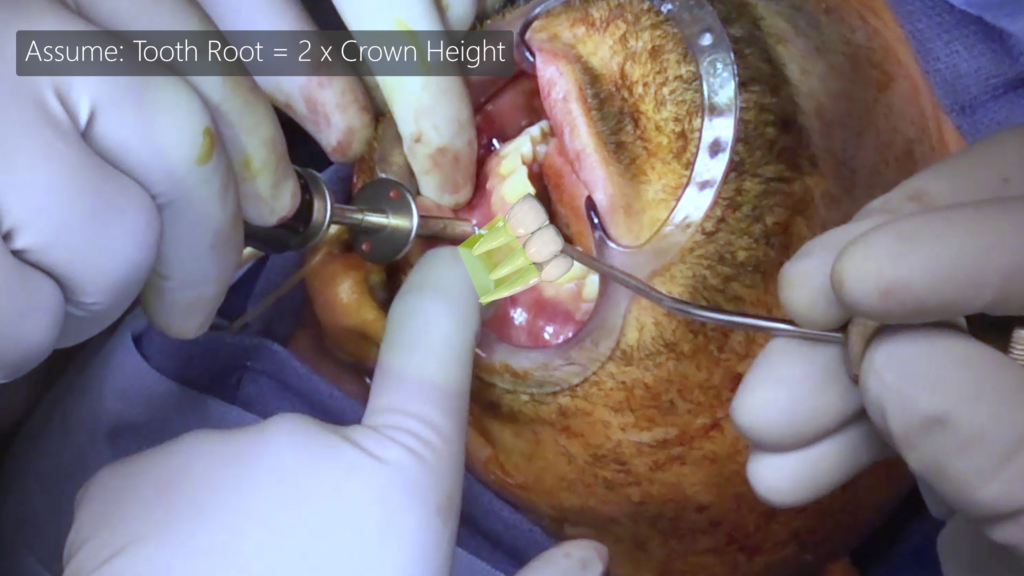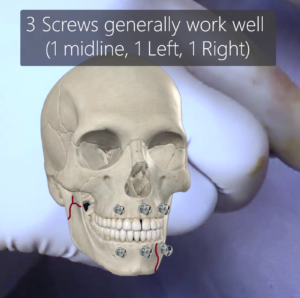Preop & Postop Images


Key Concepts:
1. Postoperative Maxillomandibular Fixation should be avoided in patients with seizure disorder or other neurologic/psychiatric conditions that prevent them from cutting wires to release themselves from rigid MMF.
2. There are multiple ways to obtain MMF intraoperatively. Common MMF options include 1) IMF screws, 2) Hybrid Arch bar placement, 3) Erich Arch bar. IMF screws are quickest to place while Erich Arch bars typically take much more time to place.
3. IMF screws:
- Advantages: Quick to place
- Disadvantages: Should not be used a long-term postoperative MMF as there is a tendency for the IMF screws come loose and can end up as a foreign body.
4. When placing screws, assume tooth roots to be twice the height of the dental crown. Place them in between where you expect the tooth roots to be present.

5. For IMF screw placement, you should place at least one screw for each fracture segment. Generally, 3 screws on maxilla and mandible work well (Left, midline, Right). 
6. For subcondylar fracture that requires ORIF, external approach provides ideal visualization and exposure when compared to intraoral approach.
- Intraoral approach to subcondylar fracture with ORIF is ideal for minimal to non-displaced subcondylar fracture.
- If a subcondylar fracture segments show bony displacement, external approach is preferred for superior visualization and exposure.
- Dr. Lee has stopped using trans-parotid approach using preauricular incision as he noticed significant number of patients presenting with facial nerve weakness that affects the upper branches (eye closing).
- In more recent years, as seen in this particular case, Dr. Lee has used an incision centered around posterior mandibular angle which allows greater skin laxity and helps with transbuccal trocar placement. The main advantage of this approach when compared to trans-parotid approach using preauricular incision is 1) less potential for injury to the facial nerve trunk (also upper branch facial nerve weakness affecting eye closure) as the approach to the fracture is occurring at the subperiosteal tissue plane and is much deeper than where the facial nerve trunk is traveling. 2) Allows direct visualization of the posterior border of mandible which helps with subcondylar fracture reduction. Disadvantage of this approach is 1) you can still can marginal nerve related lower lip weakness (although this is usually temporary and rare) 2) A curvilinear scar may be noticeable although these scars tend to heal well with acceptable cosmesis.
- In more recent years, Dr. Lee has switched to using Risdon incision, which is smaller and placed in between the angle of mandible and SCM (Please see OMFS 401, Trauma 701 case examples). The main advantage of this approach is 1) Marginal mandibular nerve is usually not encountered as the approach is posterior to it. 2) Smaller, more favorable cosmetic incision. 3) Closer to subcondylar fracture site as the incision tends to be more superior. A major disadvantage is that due to relatively less skin flap being raised, there is less tissue laxity and working with the transbuccal trocar system is more difficult.



